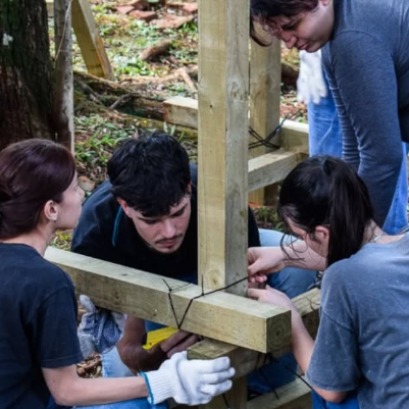
En Colombia ya se cultiva la Paulownia, el árbol más rentable del mundo
Pues a los cinco años de sembrado mide de 25 a 30 metros
En Colombia ya está disponible la Paulownia, el árbol más rentable del mundo, pues a los cinco años de sembrado mide de 25 a 30 metros, su madera es semipreciosa con múltiples aplicaciones, todas sus partes son útiles, sus hojas colaboran con la producción de oxígeno para el planeta y crece en zonas que van desde el nivel del mar hasta los 2.850 metros.
Inversionistas y campesinos encuentran en la Paulownia un excelente aliado, no solamente en términos financieros, sino en asuntos ambientales: las raíces, con una profundidad de nueve metros, recuperan suelos, son ideales para la reforestación, combaten la erosión y generan nitrógeno para el medio ambiente.
Al año de sembrada la planta produce biomasa para aglomerados y pulpa de papel. Al año y medio se pueden sacar estacones para cercas; a los dos años florece y es muy útil en la producción de miel de abejas y jalea real, todo esto aparte de la producción maderera.
Después del florecimiento, el árbol se vuelve muy atractivo a la vista y su belleza lo convierte en planta ornamental, con muchas aplicaciones en parques y edificios.

IT MAY INTEREST YOU
 Missions | New illegal felling in the Piñalito Provincial Park in San Pedro reveals the silent expansion of deforestation in protected areas
Missions | New illegal felling in the Piñalito Provincial Park in San Pedro reveals the silent expansion of deforestation in protected areas
The advance of deforestation on protected areas was once again evident this week in the Piñalito Sur Provincial Park, in San Pedro, where the Ministry of Ecology and Renewable Natural Resources confirmed a new case of selective illegal logging. The event occurs in a context of growing concern about the fragility of the environmental control system in rural and border areas, where the scarcity of resources, personnel and logistics limits the capacity of surveillance against criminal organizations organized to steal native woods and market them on the black market in connivance with sawmill owners.
 Architecture with identity: university students from Argentina and Paraguay design and build with missionary wood
Architecture with identity: university students from Argentina and Paraguay design and build with missionary wood
The Faculty of Art and Design (FAyD) of the National University of Misiones (UNaM) hosted the inauguration of the first edition of “Yvyvyrá: territory, matter and architecture”, an international workshop that promotes learning, experimentation and architectural design using wood and other materials typical of the biomes of the Atlantic Forest (Paranaense Forest) and the Humid Chaco.
 Experts cant believe it, but this tree is the oldest in the world and continues to bear fruit: it is 4,000 years old.
Experts cant believe it, but this tree is the oldest in the world and continues to bear fruit: it is 4,000 years old.
Nature keeps secrets that defy the passage of time, and one of the most surprising examples is a tree that, approximately 4,000 years old, continues to bear fruit today. This specimen has become a symbol of resistance and longevity, capable of surviving climate changes, landscape transformations and human activity itself.





















